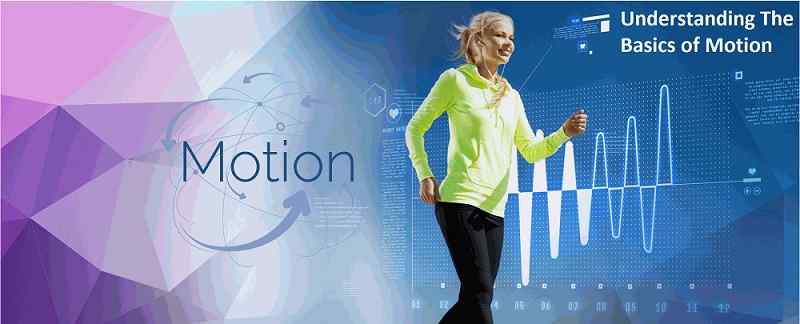Motion is defined as a change in position of an object with respect to the time interval. Motion can be described by various terms like displacement, acceleration, velocity, speed and distance. Further, in this article, you will understand the different types of motion and their types and also the concept of motion in a plane.

Table of Contents
Types of motion
Motion can be divided into the following four types:
- Linear motion
- Rotational motion
- Oscillatory motion
- Random motion
Linear motion:
Linear motion is defined as the motion in which there is a change of location that is the body moves from one point to another. It is also known as rectilinear motion. The motion takes place along the straight line and therefore it is a one-dimensional motion. The linear motion is further divided into two:
- Uniform linear motion: The body will have a constant velocity or a zero acceleration.
- Non-uniform linear motion: The body will have either varying velocity or acceleration.
Rotational motion:
Rotational motion is defined as the motion in which the object moves in a circular motion around a center of rotation. It is a three-dimensional motion. Following are the terms associated with rotational motion:
- Angular position: For a line, the angular position is defined as an angle which is relative to the fixed direction. The unit of angular position is radians.
- Angular displacement: It is defined as the angle through which an object has revolved around the centre. The unit of angular displacement is radians or degrees.
- Angular velocity: It is defined as the ratio of angular displacement and time. It is measured in rad/s and is denoted by ω.
- Angular acceleration: It is defined as the ratio of change in angular velocity to change in time. It is measured in rad/s2 and is denoted by α.
Oscillatory motion:
Oscillatory motion is defined as the repeated motion of an object. For an oscillatory motion to continue forever, there shouldn’t be friction. Example of oscillatory motion is swinging of the pendulum. An oscillatory motion has the following types:
- Simple harmonic motion: In this type of motion, the restoring force is directly proportional to the displacement. Examples of simple harmonic motion are an oscillation of spring, a mass attached on a string.
- Coupled oscillations: The oscillation that occurs when two or more oscillating systems are connected in a way such that the energy is exchanged between during the motion. Examples of coupled oscillation are orbiting of the moon and the earth.
- Damped oscillations: The type of oscillation that fades away with time. Examples of damped oscillation are RCL circuit, swinging of the pendulum.
What is motion in a plane?
Motion in a plane refers to the two-dimensional motion of the objects. The reason why 2D is referred to because two dimensions make a plane. The plane has two coordinate axes X and Y. Following are the equations of plane motion:
| v = u + at |
| s = ut + 1/2 at2 |
| v2 = u2 + 2as |
Where,
- v is the final velocity of an object
- u is the initial velocity of an object
- s is the displacement of the object
- a is the acceleration of the object
- t is the time taken by the object
Interested to learn more about other concepts related to Physics like the angle of incidence, effects of radiation, trade winds etc, visit BYJU’S.


